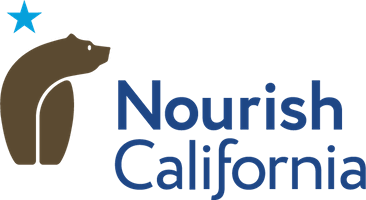8.12.16 The Obama Administration recently released four final rules that implement the remaining key provisions of the Healthy, Hunger-Free Kids Act of 2010 (HHFKA). link
These regulations build on the progress that schools in California, and across the country, have already made to improve the quality of meals served in schools. The final rules will ensure that children have access to healthy snacks and that nutrition standards for the foods marketed and served in schools are consistent. The rules will also promote integrity across the school meals programs.
Community Eligibility Provision (CEP)
The Community Eligibility Provision (CEP) final rule, which becomes effective on August 29, 2016, mostly codifies requirements that were already implemented through USDA guidance, but it also makes a few important clarifications that will strengthen the CEP – a reimbursement option that allows the service of school meals to all children at no-cost in high poverty schools without collecting household applications.
The final rule maintains: 1) the 1.6 multiplier to determine the free claiming percentage; 2) the current threshold of 40% identified students; and 3) the requirement for districts to provide a 10-day grace period of free meals for students transferring from a CEP or Provision 2 or 3 school.
Key changes include: 1) providing state agencies the discretion to allow school districts to extend the grace period of free meals up to 30 days; 2) the requirement that schools changing from CEP or Provision 2 or 3 during the school year must provide a grace period of free meals for up to 30 days; and 3) the requirement that school districts utilizing CEP or Provision 2 or 3 must conduct direct certification at least once per year.
Administrative Review
The Administrative Review final rule updates the process used by state agencies to monitor federal school nutrition programs. A summary of the changes to the Administrative Review can be found in a chart starting on page 11 of this final rule. link
California, along with most other states, is already implementing the updated review process. One element in this final rule that is of particular interest to California advocates is the enhanced transparency requirement. The California Department of Education will be required to post a summary of an school district’s final review results online within 30 days after the review results are provided to the district. The review summary must be posted online for the public in an “accessible, easily understood manner,” with additional guidance on the appropriate format forthcoming from USDA-FNS. State agencies may also strongly encourage SFAs to post the results on the school district website.
Smart Snacks in School
The Smart Snacks in School final rule seeks to align the nutritional quality of snacks sold to children during the school day with the science-based nutrition standards found in school meals. These include ensure students are offered more fruits, vegetables and whole grains. The Smart Snacks standards were implemented in the 2014 – 2015 school year in accordance with the interim final rule. This final rule made only modest changes to those standards based on public feedback. USDA provides a range of materials to support the implementation of this rule. link
California has been a pioneer in establishing statewide nutrition standards for competitive foods. In 2005, the State passed SB 12, which set nutrition standards for food sold in schools, and SB 965, which set nutrition standards for beverages. Those laws are expected to be updated to reflect the new Smart Snacks regulations in a 2016 bill currently moving through the legislature, SB 1169 (McGuire). link
Local School Wellness Policy
The final rule on Local School Wellness Policy Implementation provides the framework and guidelines for local educational agencies to establish local school wellness policies. Below, the major components of the final rule are summarized. For more detailed information about implementation visit USDA’s webpage on local school wellness policies. link
The final rule requires local school wellness policies to include: (1) nutrition guidelines for all foods and beverages available on the school campus during the school day; (2) a policy about food and beverage marketing; and (3) measurable goals for nutrition promotion and education. The final rule also establishes requirements for public involvement, transparency, and evaluation.
Local education authorities are provided flexibility in how they establish public involvement, but the final rule clarifies that members of the general public are allowed to participate in updating the wellness policy. Flexibility is also granted to local education authorities for how annual notification of the wellness policy is provided to households. Notably, the annual reporting requirement on progress towards meeting local school wellness policy goals is eliminated, and a triennial reporting requirement has been established in its place.
Questions? Contact Tracey Patterson at 510.433.1122 ext 101





